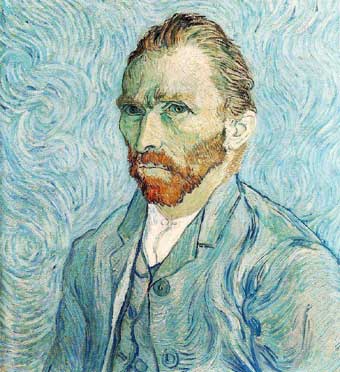From the British magazine Standpoint, a different take on the artist Vincent Van Gogh-- on his sanity, his prolific output and his little-known love for the written word:
One learns time and again that both words and images fuelled Van Gogh's imagination equally. "Books and reality and art are the same kind of thing for me." And then, echoing this sentiment, "One has to learn to read, as one has to learn to see and learn to live."
Van Gogh was a voracious reader-fluent in Dutch, French and English. He read all of Dickens in English (Hard Times was his favourite), he was particularly moved by Shakespeare's history plays, and he loved Flaubert and Maupassant. Indeed, he was extremely knowledgeable about much of the French fiction of his day. In addition, he learned a great deal about Japan from the fiction of Pierre Loti, particularly his bestselling Madame Chrysanthème, the basis for Puccini's Madame Butterfly. Van Gogh identified particularly with French naturalist writers, and was inspired by Zola's depiction of Parisian life, reading all 20 novels in Zola's Rougon-Macquart cycle. "[They] paint life as we feel it ourselves, and thus satisfy that need which we have, that people tell the truth," he wrote to Wil in 1887.
Although Arles was once the capital of Gaul, in the western Roman Empire, Van Gogh was interested in none of its history. Instead, it was here that he wrote something of his mission statement to paint the here and now and the everyday. Unlike Gauguin, who declared that he sought only to paint his visions and his dreams, Van Gogh wanted to paint life as it was happening around him: "The zouaves, the brothels, the adorable little Arlesiennes going to their first communion...the priest in his surplice who looks like a dangerous rhinoceros, the absinthe drinkers..."




No comments:
Post a Comment